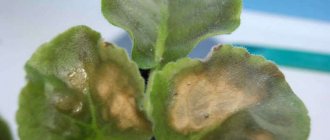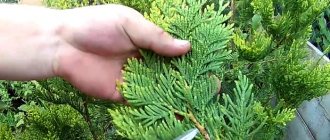One of the most dangerous plant pests that we have to fight every year is the spider mite. It settles in huge colonies on all vegetable crops, leading to a significant reduction in yield, and in advanced cases, to the complete death of plants. The omnivorous pest also penetrates homes, where it settles on indoor flowers. To destroy spider mites, effective chemical preparations and infusions according to folk recipes have been developed. It is necessary to fight the parasite with all available methods, and also not to forget about preventive measures.
Description of the spider mite
The spider mite family contains more than 1,200 species and is found everywhere except Antarctica. The size of an adult male is 0.3-0.45 mm, females - 0.4-0.8 mm. More often than other species, the common spider mite is a pest of garden and agricultural plots. It feeds on the sap of green plants, leaving behind dry skeletons entwined with cobwebs. The phytophage belongs to the class of arachnids; it is not an insect, but an animal.
Spider mite
What does a spider mite look like? The shape of its body resembles an ellipse, it is covered with hairs, and the back is convex. Larvae have 6 legs, adults have 8. Thin legs have sharp claws with which they cling to the surface of plants. The color of the larvae ranges from light green to brown; they darken with age. Reproduction occurs by laying eggs. In the absence of fertilization, males emerge from them, and females emerge from fertilized clutches.
One generation lives from 14 to 30 days; females manage to lay 100-150 eggs during this period. A voracious larva emerges from each after 3 days. Under unfavorable conditions, offspring do not appear for 2 weeks. Eggs can stay alive for up to 5 years. At each stage of their development, from larva to adult, arachnids feed on cell sap. Weakened immunity of cultures cannot cope with infectious diseases. Following the pest comes gray rot, sooty fungus and other diseases.
High temperature (from 270) and low humidity are optimal conditions for active reproduction of pests. As daylight hours shorten, they enter diapause, a state of hibernation. Hiding in the cracks of buildings, soil or plant remains, phytophages wait for the onset of heat. This ability makes it much more difficult to fight them.
How to detect
This variation has a color suitable for camouflage and is small in size. They blend in with the foliage, which helps them stay in the shadows for a long time and go unnoticed.
It is much easier to detect its presence by the symptoms of the foliage. If there are few of them on the bush, then the leaves are simply covered with white spots, but if there is a large arch, the plant is enveloped in an almost imperceptible web, hence the name mite.
You can verify this by looking at photos of the flowers on which it started. The females of these creatures die about a month after birth, but during this time, unfortunately, they can lay over a hundred eggs.
Pest on vegetables - how to fight?
The spider mite has preferences among vegetable crops; most often it chooses cucumbers, melons, eggplants, and peppers. Phytophages feel especially good in a greenhouse. Here they are protected from bad weather and temperature fluctuations. A high reproduction rate under favorable conditions leads to rapid infection of all vegetables.
The result of the pest’s activity is:
- mechanical damage to the back of the leaves;
- slowing down the development of the ovary;
- when a spider mite appears on cucumbers, the upper tier of the plants becomes entwined with cobwebs;
- photosynthesis processes are disrupted;
- necrosis develops, the plant becomes deformed and dries out;
- Productivity declines catastrophically.
Attention. The natural enemy of the spider mite, Phytoseiulus persimilis, is used in greenhouses to kill pests. The predator feeds exclusively on this species; it is absolutely not dangerous to plants and humans.
Pest development cycle
The process of arthropod development is called “metamorphosis.” It includes the following phases:
eggs; prelarvae; larvae; protonymph; nymphs in the breeding stage.
These stages may be partially absent in certain types of ticks. During each phase, a molting process occurs.
Prevention is an important stage in pest control
The fight against phytophages includes mandatory preventive measures:
- After harvesting, it is necessary to remove all crop residues, pull out and remove weeds. It is in them that pests find refuge for the winter.
- Plant plants at intervals between rows.
- Carry out soil reclamation, remove the top layer of contaminated soil and replace it with new one.
- To get rid of spider mites overwintering in a greenhouse, it is necessary to fumigate and burn all structures with a blowtorch.
- It is recommended to set a climate regime inside the greenhouse that is uncomfortable for pests - humidity 80-90%, temperature up to 250.
- Regularly treat with acaricidal preparations.
What plants does the pest attack?
Among vegetables, spider mites often attack cucumbers, tomatoes, eggplants, peppers, legumes, and pumpkin crops .
Strawberries, gooseberries, currants, raspberries, and grapes are damaged by insects .
Spider mites harm fruit trees: apple trees, pears, apricots, cherries, plums, cherry plums .
The parasite loves flowers and ornamental plants: roses, asters, palm trees, fuchsias, callas, citrus fruits, orchids, impatiens, abutilons, ficuses, saintpaulias, cyclamen, pelargoniums, azaleas .
Chemical and biological preparations for plant treatment
Methods to combat spider mites include the use of improvised means and specially developed preparations. The first option is environmentally friendly, but in case of severe infection it is not effective. At the first sign of a pest, it is recommended to treat all plants with a soap solution (100 g of laundry soap per 10 liters of water). Infusions of onion peels, garlic and tobacco are used.
Eco-friendly and safe methods of destroying phytophages include the use of the predatory phytosailus mite. It is enough to place 60 individuals per m2 of land to get rid of eggs, larvae and adult pests. Acarifage is active at temperatures above 200 and high humidity. After removing all enemies, the predator will die without food.
Chemicals are much more effective in the fight to preserve the crop. Many means have been created that can destroy the pest at various stages of development.
- Karbofos is an organophosphate substance, insecticide and acaricide. Available in various forms and concentrations. The active ingredient malathion is effective against insects and arachnids. The duration of protection in open ground is 10 days, in a greenhouse – up to 7 days. Spraying is carried out in the evening in calm weather.
- Actellik is a spider mite remedy suitable for use on open and protected soil. The drug is an insectoacaricide; it does not affect the plant, it only poisons pests. The enteric-contact substance has fumigant properties, destroying phytophages on both sides of the leaves. Duration of exposure is 2-3 weeks.
- Apollo - the action of the acaricide is aimed at eggs and larvae. This drug is one of the few that can cope with pests at an early stage of development. The active compound clofentesine sterilizes adults, preventing reproduction. Apollo is a contact acaricide; to poison eggs, it is necessary to thoroughly moisten the plants with a freshly prepared solution. The substance is slightly toxic, safe for people and insects. The drug protection lasts up to 2 months.
Attention. When crops are treated with one chemical, pests become addicted. During the summer season, it is necessary to change the means of destruction.
Terms of use
For better results, in addition to treating the plant with acaricides, the following rules must be followed:
Alternating between chemical treatments and hot showers. If mites have affected a large area of the plant, it is recommended to alternately use different drugs. It makes sense to treat all the flowers in the house. When baiting arthropods, be sure to clean the window or shelf where the plant lives. Use a soap solution first and then an alcohol solution. Disinfect the soil during transplantation.
Types of mites on houseplants
Among plant diseases, spider mites occupy a special place. Phytophages are persistent and difficult to remove pests, including several species:
- The common spider mite is a species common on the ground and indoors. Colonies settle on the underside of leaves, hiding from the sun's rays. Adults quickly crawl from the infected plant to neighboring flowers.
- Red mite - indoor plants often suffer from attacks by a small pest that settles on lemon, orchids, roses, and balsam. Soft-bodied females measuring 0.5 mm are purple, males 0.3 mm are bright red.
- False spider mite - has a miniature size of 0.25 mm; it does not spin webs. Infection becomes noticeable when there are a huge number of individuals.
- The Atlantic mite is similar in appearance to the spider mite. Propagates in any humidity, prefers palms and citrus trees.
- Cyclamen mite - affects the edges of leaves, buds and stems. Not noticeable to the naked eye. Colonies settle on the upper side of the leaves and look like a layer of dust. Pests choose cyclamens, balsams, chrysanthemums and other tuberous plants.
- The broad spider mite is a very prolific phytophage; a new generation appears on the leaves every 5 days. After 2-3 weeks, the plant becomes entangled in cobwebs and clusters of mites that look like reddish-brown dust. The pest attacks oleander, ficus, cactus, tagetis. Sulfur preparations are effective in combating it.
- Cactus flat mite - it is recommended to use insecticides to destroy phytophages. Carry out the treatment several times with an interval of 7 days.
Folk remedies
It is best to start fighting ticks using traditional methods. Not only will the plants not suffer from them, but nothing will happen to humans either.
- Fill a bucket of water and pour 30 milliliters of ammonia inside.
- Mix thoroughly.
- Water the stems and leaves regularly.
- Also constantly wipe the walls and doors of the greenhouse with the resulting mixture.
Tomato tops
The tomato tops that remain after harvesting will be an excellent tool in the fight against the pest.
You need to take about 0.5 kg of it and fill it with a bucket of boiling water. Further:
- place the bucket with tops on the stove and boil for 30 minutes;
- strain the resulting mixture;
- add soap shavings to it.
By watering with this mixture, you will get rid of not only ticks. In addition to them, it will be possible to destroy the ubiquitous aphids.
Fumigation
You will have to wait until the end of the summer season - usually this happens in early November.
MOST READ FROM PARTNERS
Further:
- harvest the remaining harvest;
- water the soil, getting rid of even the tiniest weeds;
- put on a gas mask and protective gloves;
- Moisten the surfaces thoroughly with water;
- place the checkers on stones or metal surfaces and then set them on fire;
- close the door to the greenhouse for several days;
- After this, you need to ventilate the room.
Dry wormwood
- Collect a kilogram of wormwood and chop the stems.
- Fill the grass with 10 liters of water.
- Cover the container with a lid and keep it out of the sun for 2 days.
- Place the bucket on the fire and wait until it boils.
- The liquid should bubble for ¼ hour.
- Dilute the resulting mixture with a bucket of water and begin spraying the greenhouse plants.
Where do spider mites on flowers come from?
Pests are unpretentious in choosing a habitat; they can be found on various indoor flowers:
- ficus;
- palm;
- Sims azalea;
- rose;
- Cyperus.
The first signs of infection are yellow dots on the leaves, which over time merge into a large spot. Microscopic arthropods in small quantities do not entwine indoor plants with webs, so they are not immediately noticeable. Usually the damage caused by it is attributed to a lack or excess of moisture. You should look for pests on the back of the leaves. When there are several dozen individuals, they can be noticed.
Attention. If you suspect a spider mite on a ficus, it is worth conducting a simple study. Shake the sheet over the paper, and then examine the surface with a magnifying glass. A few pests are sure to fall off the plant and be noticed.
Symptoms of plant damage
The following signs of mite damage to plants are distinguished:
- Brown spots that look like holes made with a needle.
- Yellow or light green dots.
- Falling flowers and leaves.
- Slow plant growth.
- Silvery webs between the leaves.
- The presence of small insects on the underside of foliage that look like red or yellow moving dots.
- A large number of mites on the web is a sign of a large mite infestation.
- The presence of black grains that are easily separated from the plant - mite excrement.
The spider parasite loves greenhouse crops with thick, fleshy leaves. Plants such as ficus, hibiscus, and fuchsia are most susceptible to its attacks.
How do indoor plants become infected?
The pest enters plants in various ways:
- With an infected indoor flower. When purchasing a new plant, you should carefully examine its leaves. You won’t be able to spot a tick, but yellow dots on the leaves will make you think about the health of the plant.
Advice. It is recommended to quarantine a new flower for 2 weeks. If it turns out that it is a carrier of the pest, only it will have to be treated, and the rest of the plants will not be harmed.
- With soil. Store-bought or street soil may be fraught with danger in the form of females or spider mite larvae. Arachnids can enter diapause, a state of slow metabolism, under unfavorable conditions. They come to life as the temperature increases and the humidity decreases. After the start of the heating season, the pest begins active life.
Advice. It is recommended to bake soil taken from the street in the oven.
- Through an open window with the wind. Residents of the first floors risk their indoor plants more than others when the windows are open. Adults travel long distances with the wind, clinging to webs. The pest can be carried onto the balcony, and also enter the apartment on the clothes of summer residents. He is mobile, in search of food he actively explores new territories. A flower mite brought in with a fresh bouquet will be a threat to all indoor plants.
Why is it dangerous?
Spider mites are herbivorous arachnids.
Their main food is cell sap, which they suck out through numerous punctures on the leaves. The affected leaves dry out and fall off, the plant cannot develop normally, form buds and fruit ovaries.
Moving from one plant to another, mites carry dangerous viruses, fungi, and bacteria. Arachnids are not capable of flying, but are easily transported by the wind along with cobwebs. After overwintering, the pests quickly restore the population and can completely destroy the crop.
Pest extermination methods
Many flower lovers have not encountered such a problem before, so they do not know how to deal with spider mites on indoor plants. Methods for destroying the parasite depend on the extent of its spread. At the initial stage, it is necessary to use a mechanical method - tear off the yellowed leaves, where the bulk of the pests have accumulated, and burn them. Treat the plant itself with a soap solution. It is prepared at the rate of 10-20 g of laundry or tar soap per 1 liter of water.
After removing the dry leaves, wipe the rest with a cloth soaked in soapy water on both sides. This allows you to remove adults and some of the larvae. To enhance the effect, the plant along with foam and moisture is placed in a plastic bag for 2 days. After 48 hours, it is thoroughly washed with a warm shower. The procedure is not a one-time procedure; it is repeated after a week.
Attention. Simultaneously with processing the flowers, it is necessary to wash the window sill (with soap or alcohol), window frames, and wash the curtains.
A common method of getting rid of spider mites is alcohol treatment. It should be done carefully, first try on one leaf so that there is no burn. Apply alcohol with a spray bottle or cotton pad. The treatment is suitable for ficus, dieffenbachia and other plants with dense leaves. This disinfection is effective for window frames. Exposure to ultraviolet lamps is recommended. It only benefits plants, and ticks always avoid contact with ultraviolet radiation.
How to find out about plant infestation
The first sign of a tick appearance is light spots on the leaves remaining at the puncture site.
Gradually there are more and more of them, the dots merge into large whitish or reddish spots. The leaves take on an ugly shape, dry out and fall off. At this time, you can notice thin threads entangling the leaves and stems of plants. With severe lesions, the amount of cobwebs increases.
Spider mites prefer juicy young greens rich in chlorophyll. In spring, pests appear on weeds: quinoa, plantain, coltsfoot, and nettle.
Gradually, mites move to cultivated plants: flowers, fruit trees and shrubs, berry fields. You can notice their presence in mid-summer: at this time the colony of pests increases significantly.
The following plants are especially affected by spider mites:
- garden strawberries;
- gooseberry;
- currant;
- raspberries;
- apple trees;
- pears;
- tomatoes;
- cucumbers;
- melons;
- eggplant;
- pepper;
- beans.
Pests often attack flower beds and balcony boxes. They can be seen on asters, roses, marigolds, saffron, and petunias. Mites enter the house with cut flowers and pose a danger to all indoor plants.
Specialty chemicals
Without the use of chemicals, it will not be possible to completely remove pests. Modern acaricidal preparations are designed for use in closed spaces. An effective method of combating spider mites is to spray with chemical compounds and treat the soil in a pot with them. Recommended products include:
Fitoverm
Plant-based bio-insecticide Fitoverm can be used at home without fear. It is recommended for the prevention and destruction of pests on indoor plants. The effect of the product begins 6-7 hours after application. The period of protective action is 2-3 weeks. An ampoule of the drug (2 ml) must be placed in 1 liter of water, and the prepared mixture should be intensively sprayed onto the infected plants.
Aktara
A modern acaricidal drug is used not only in the garden, but also to destroy pests on flowers - roses, violets, ficus and others. The product is offered in the form of a concentrated emulsion and water-soluble granules. Small packaging in ampoules and bags is convenient for processing house plants. Aktara against spider mites is a systemic drug. It penetrates the leaves and tissues of plants, sucking the juice from them, and the pests receive a dose of poison.
An hour after the insecticide enters their body, phytophages lose the ability to feed and die within 24 hours. The effect of the drug, when applied to the soil, protects indoor plants for 2 months. When spraying, use a fresh solution. When working with a toxic substance, you should be careful - wear gloves, wash your face and hands after work, and change clothes.
Plant Pin
Sticks with the active ingredient butoxycarboxim. A no-spray remedy for spider mites on houseplants. The number of sticks depends on the diameter of the pot - 9 cm - 1, 12 cm - 2, 20 cm - 5-6. They are stuck into the ground at a distance of 2 cm from the plant. During watering, the active substance dissolves and enters the roots of the flower. The effect of the drug is observed after 3-7 days. It will protect against the pest for 8 weeks. Etisso has a similar effect.
Alcohol
This is the most effective of all folk methods, but it is only suitable for plants with dense leaf texture. Simply take a cotton pad and soak it in ammonia. Next, all sheet plates are wiped. However, if ticks are found in places where access is limited, the product will not have the proper effect. You can also add a couple of drops of acetone to the alcohol solution for greater effectiveness.
Let us consider further what preventive measures exist.
Prevention
It is better to prevent infection by phytophages than to fight them later. Simple rules will help you preserve indoor plants:
- The active development of spider mites on lemon, ficus and other indoor plants occurs in dry air conditions. You should ventilate the room more often and spray the plants with water.
- The earth mixture prepared independently or purchased is sterilized in the oven, and the moss is treated with boiling water.
- When processing plants, be sure to wipe the window sill where fallen pests may be located.
- Do not place bouquets of cut flowers next to indoor plants.
- New plants must undergo a quarantine period - stand separately from others for 2-3 weeks after purchase. Even if the purchase was made in a specialized store.
Advice. Place flower pots in wide trays with water, which will gradually evaporate, creating humidity that is uncomfortable for ticks.
Measures for the prevention and control of spider mites are characterized by an integrated approach. They require taking into account the development characteristics of the pest. If after the first treatment complete destruction has not occurred, then after 7-10 days it must be repeated. Ticks are resistant to external factors, but with due persistence they can be defeated.
Reasons for appearance
Unlike apartments and houses, the enclosed spaces of which are almost an isolated world, garden plots and vegetable gardens are open to all “winds” and there can be a lot of ways for pests to penetrate them. Among them:
- domestic and wild animals;
- Human;
- contaminated soil or organic fertilizers;
- air flow.
It often happens that individual individuals are present on the site for a long time, but do not clearly manifest themselves. In the absence of suitable weather conditions, specifically high temperatures and dry air, the population does not die, but is not very noticeable either
. From year to year, ticks overwinter in the soil or layer of fallen leaves and wait for the right moment, so the development of pests is facilitated by the lack of preventive spring acaricidal treatments and poor agrohygiene (the constant presence of litter, dry grass, old mulch, etc.).
Description and classification
According to the biological classification, spider mites are a family of arachnid insects that includes at least 1,300 species. These are very small (no more than 1 mm) ticks with an abdomen in the form of an elongated hemisphere, four pairs of thin translucent legs equipped with tenacious claws, and a pair of thin antennae.
An insect has several life cycles:
- egg,
- translucent light green or brown larva,
- nymph,
- an adult whose body is colored orange, red-brown, yellowish or greenish.
At high daytime temperatures, the egg develops into an adult capable of laying new eggs in just a week. If the temperature is less than 15°C, this process extends for a month. In autumn, outdoors, ticks stop feeding and look for winter shelter. However, due to the high temperature indoors, this does not happen. And if ground plants get a break at least in the cold season, then domestic crops are always susceptible to attack by the parasite.
[!] It should be noted that in open ground the tick does not pose any particular danger at all. Unfavorable conditions (high air humidity, rain) and a large number of large insects preying on the parasite greatly inhibit population growth. But greenhouses, greenhouses and indoor spaces are excellent places for the aggressor to breed.
Household and garden plants are harmed by several types of spider mites:
- Common (lat. Tetranychus urticae). The most common species, most often found on ornamental crops in open and closed ground. It is a polyphagous (polyphagous insect whose diet consists of a large number of plant species).
- Red (lat. Tetranychus cinnabarinus). Damages both ornamental and agricultural plants. In regions with a warm climate it can live outdoors, in the north - only indoors.
Common and red spider mites
- Atlantic (lat. Tetranychus atlanticus). A pest of cucumbers that lives everywhere.
- Legume (lat. Tetranychus phaselus). The main habitat is the Far East. As a rule, it feeds on crops of the legume family.
- Turkestan (lat. Tetranychus turkestani). Polyphagous, feeding on both vegetables (cucumbers, tomatoes) and ornamental plants.
Despite the diversity of species, the methods of combating them are almost identical.











